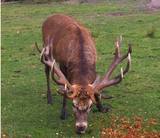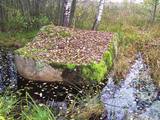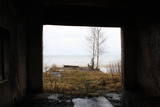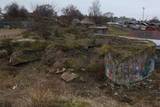| Nr | Nosaukums | Apraksts |
|---|---|---|
|
Viens no izcilākajiem Baltijas ūdenskritumiem – ap 8 m augsts un līdz 70 m plats (iespaidīgāks pavasaros un pēc lietavām). Ūdenskritums un tam sekojošais ~ 300 m garais kanjons veidojies Ordovika perioda kaļķakmeņos, kuros zinātājs saskatīs galvkāju u.c. fosīlijas. Mazūdens periodā drosmīgākie mēģina šķērsot upes straumi gan virs ūdenskrituma, gan arī zem tā, kur kaļķakmens pārkares un krītošais ūdens ir izveidojuši savdabīgu „tuneli”.
|
||
|
1993. gadā dibinātais Soomā nacionālais parks aizsargā lielo purvu masīvus, palienes pļavas un mežus. Parka apmeklētāju centrā ir pieejama informācija par pārgājienu takām un vietējiem pakalpojumiem. Pieejamas vairāk kā 10 dabas takas un skatu torņi. Šeit varat iepazīties ar pastāvīgo ekspozīciju un doties tematiskā mācību pārgājienā par bebru dzīvi. Soomā ir plaši pazīstams vērienīgo plūdu (martā un aprīlī) dēļ, ko sauc par piekto gadalaiku. Plūdu laikā pa Soomā mežiem, pļavām un upēm tiek organizēti pārgājieni ar kanoe laivām un vienkocēm (www.soomaa.com). Te var apgūt vienkoču grebšanas prasmi un piedalīties nometnēs. |
||
|
Daugava ir Latvijas lielākā upe un latviešu tautas likteņupe. Jau pēc leduslaikmeta beigām, pa Daugavas ieleju tagadējā Latvijas teritorijā „ieceļoja” pirmie augi un dzīvnieki, kuriem sekoja cilvēks. Šī iemesla dēļ Daugavas krasti ir viena no senākajām cilvēku dzīves vietām, kā arī augu sugām bagātākā valsts teritorija. Arī izcilu kultūras un vēstures pieminekļu lielais blīvums ir iemesls, kādēļ Daugavas krasti ir tūristu iecienīti. Rīgas – Jēkabpils posmā kā ērts pārvietošanās līdzeklis ir izmantojama Rīgas – Daugavpils dzelzceļa līnija. Tālāk norādītas dzelzceļa stacijas, kurās ir vērts izkāpt un veikt īsus – dažu stundu līdz pusdienas ilgus radiālus izgājienus ar atgriešanos stacijā. Maršruta informācija no Latvijas Lauku foruma |
||
|
Pededzes upes palieņu pļavās un to apkārtnē 200 ha platībā audzē ~ 350 staltbriežus, stirnas un mežacūkas. Briežu dārza teritorijā uzcelti torņi graciozo meža dzīvnieku vērošanai. Izrakti dīķi komercmakšķerēšanai. Ekskursijas savlaicīgi saskaņojamas! |
||
|
Platais akmens Mākoņkalna pagastā netālu no Āžmuguras akmeņa,
arī neliela purviņa malā guļ Platais akmens. Tas pretēji savam kaimiņam
ir plakans. Ap abiem akmeņiem vijas nostāsti. Viens vēstī, ka Āžmugura
ir Platā akmens daļa, un arī Platā akmens iedobumā sakrājies lietus
ūdens spēj ārstēt kārpas.
|
||
|
Maršrutā varēsiet iepazīt Latgales īpašo kultūrvidi, cilvēkus, kas to veido, priecāties par skaistajām ainavām, izstaigāt dabas takas un izpeldēties kādā no izslavētajiem Latgales ezeriem. Līvānos uzzināsiet par stikla pūtēju darbu, Daugavpilī izstaigāsiet 19.gs cietoksni, kur tagad iekārtots pasaulslavenā mākslinieka Marka Rotko centrs. Ceļš vīsies pa gleznainajiem Daugavas lokiem. Veselīgās “Kurmīšu” tējas baudāmas pa ceļam uz Maizes muzeju un svētceļnieku galamērķi – balto Aglonas baziliku. Ludza priecēs ar senatnīgām koka ēkām un bagātīgo vietējās amatniecības atspoguļojumu Amatnieku centrā. Rēzeknē interesi piesaistīs Latgales vēstniecība “Gors”. Pie Lubānas ezera vērts nogaršot zivju zupu un uzkāpt skatu tornī pavērot plašumu un putnus. Maršruta informācija no Latvijas Lauku foruma |
||
|
Bioloģiskā saimniecībā audzētu produktu un dzērienu degustācijas, meistarklases ar saukli "Izgaršo dzīvi". Saimniecība izveidota uz 1847. gadā Vācu barona fon Hahn būvētām ūdens dzirnavām, kurā tiek audzēti dambrieži, foreles, augļi un dārzeņi. Ekskursija pa dambriežu dārzu, bērniem tematiskas (gadalaiku) ekskursijas un radošās darbnīcas. Saimnieks ir vīndaris, kurš ar rūpību pieiet ik vienam sevis darinātajam dzērienam. Degustācijas un stāstus viesiem piedāvā izbaudīt romantiskajā vīna pagrabiņā. |
||
|
Viena no lielākajām Austrumeiropas baznīcām (līdz 16. gs.) un vienīgā Igaunijas viduslaiku baznīca ar diviem torņiem. Celta laikā no 13. – 16. gs., sagrauta Livonijas karā. Kora daļā atrodas Tartu universitātes muzejs (agrāk – bibliotēka). Torņi ir restaurēti un tajos izveidoti skatu laukumi. |
||
|
Ar šodienas skatu raugoties, šķiet neticami, ka vēl pirms kādiem diviem gadu desmitiem jūras krastā atradās speciāli būvētas ēkas ar jaudīgiem prožektoriem, kurus uz speciālām sliedēm tumšajā diennakts laikā izstūma uz platformas ar mērķi izgaismot tuvējo jūras akvatoriju un liedagu, potenciālo robežpārkāpēju meklējumos. No minētā objekta saglabājušās tikai ēkas un tai pieguļošās platformas drupas, kuras krietni papostījuši jūras viļņi.
|
||
|
Bolderājā – austrumos no Lielupes ielas un dienvidaustrumos no Jātnieku ielas Daugavas krastā ir saglabājušās paliekas no četrām uzspridzinātām batereju pozīcijām. Šīs baterejas, kurās atradās 152. kalibra lielgabali, ir daļa no kādreizējās Rīgas fortifikāciju sistēmas (sk. arī Komētfortu, Daugavgrīvas cietoksni, Mangaļsalas fortifikācijas), kuras mērķis bija aizsargāt pilsētu no uzbrucējiem, kas nāktu (nāca) no jūras puses. No batereju augšas labi redzama Daugava un no jauna uzbērtā Krievu salas ziemeļdaļa (milzīgs smilšu kalns). Šī vēstures pieminekļa un tās apkārtnes stāvoklis – vairāk kā bēdīgs ...
|
||
|
Sprižu ģimenes bioloģiskā saimniecība "Dabas Gardumi" atrodas Mārupes novadā un tā apsaimnieko ogulājus 23 ha platībā. Audzē avenes, upenes, jāņogas, ērkšķogas, sausseržus, piparmētras, ābolus, plūmes u.c. Visas ogas svaigā veidā tiek piedāvātas sezonas laikā, kā arī tiek pārstrādātas, no kurām ražo dažādus augļu - ogu gardumus: augļu-ogu bumbiņas, salmiņus, sulas, marmelādes un tējas. Saražotā produkcija ir dabiska, garšīga, veselīga, šķiedrvielām un vitamīniem bagāta, jo pārstrādes procesā augļiem, ogām un garšaugiem tiek saglabāts pēc iespējas lielāks tā dabiskais sastāvs. Pārsvarā gardumi top no pašu izaudzētiem un savāktiem dabas izejmateriāliem (augļi, ogas, garšaugi), ražotajiem produktiem netiek pievienots cukurs, līdz ar to augļu-ogu gardumi ir lieliska gan ikdienas, gan svētku uzkoda kā maziem, tā arī lieliem baudītājiem. |
||
|
Brīvdienu mājiņas Jūvgumegi atrodas Kurzemes reģiona Mazirbē, Slīteres nacionālajā parkā. Viesiem tiek piedāvātas četrvietīgas un divvietīgas naktsmītnes ar bezmaksas privātu autostāvvietu. Visās ir pieejama virtuve ar ledusskapi un plīts virsmu, kā arī tualete, duša izvietota uz terases. Līdz liedagam 400m. |
||
|
Pupuchi ražotnē top kraukšķīga un veselīga uzkoda no cūku pupām - Pupuchi. |
||
|
Atrodas Limbažu Lielezera ziemeļrietumu krastā, vietā, kur sākas Lielezera dabas taka. No torņa pārredzams Lielezers un tā tuvāko krastu ainava. Vērts iziet arī vairākus kilometrus garo un interesanto taku. Atrodas Ziemeļvalstu biosfēras rezervātā. |
||
|
Krodziņš "Mazais Ansis" atrodas Kocēnu novad Rubenē, Murjāņu - Valkas autoceļa (A3) malā. "Mazā Anša" interjers atbilst masīvās koka guļbūves aurai un tajā iespējams aplūkot senlaiku instrumentus, sadzīves priekšmetus un zirglietas. Divstāvu guļbūves ēka ar terasi. Piedāvā pirti, ugunskura vietu, bērnu rotaļu laukumu. Sadarbojas ar vietējiem zemniekiem un mājražotājiem. Latviešu virtuve: Valmieras salāti, vārīta mēle, pelēkie zirņi, brokastis zemnieku gaumē, aukstā zupa, zandarta fileja, jēra gaļas cepetis, grilēta cūkgaļa, rupjmaizes kārtojums, zemeņu krēms ar ievārījumu, rudzu maize, zāļu tējas. Īpašais ēdiens: Liellopu gaļas fileja ar kartupeļu pankūkām. |
||
|
Atrodas Rīgas ielā 22 a. Ēka ar iespaidīgo būvapjomu celta pēc Valsts prezidenta Kārļa Ulmaņa ierosmes 1936. - 1937. gadā (arhitekts Verners Vitands) un nominēta kā viens no Latvijas pirmās brīvvalsts izcilākajiem arhitektūras pieminekļiem. Atrodamas ziņas, ka celtne pat bijusi modernākā daudzfunkcionālā ēka Eiropā! Tagad Vienības namā darbojas Daugavpils teātris, Latgales centrālā bibliotēka, Latviešu kultūras centrs, Latviešu māja, ASV informācijas centrs, Daugavpils TIC u.c. iestādes. Blakus namam atrodas Vienības laukums. Sezonas laikā tuvākajā apkārtnē izveidotas skaistas ziedu kompozīcijas. |
||
|
Dodieties ekskursijā, lai gūtu ieskatu lauku profesijā un dzīvesveidā, kā arī iegūtu jaunus iespaidus un labu atpūtu visai klasei. Ekskursijas sākumā apmeklējiet savvaļas dzīvnieku parku, kura voljēros dzīvo ~ 200 dambriežu. Tālāk dodieties uz saimniecību, kur aug vairāk nekā 100 augu sugu un šķirņu - ekskursija pa saimniecību, augu stādu iegāde, tēju, augļu un ogu degustācijas. Pēc tam apmeklējiet Skrīveru pārtikas kombinātu, kurā iespējams iegādāties gardās Gotiņkonfektes un doties ekskursijā. Brauciena noslēgumā - Skrīveru mājas saldējums ar stāstījumu par saldējuma gatavošanu un degustāciju. |
||
|
Esot Nidā, noteikti ir jāuzkāpj Urbo kalnā (Urbo kalnas) – 52 m augstā un ar mežu apaugušā kāpā rietumos no Nidas centra, kur slejas 1944. g. vācu armijas uzspridzinātā un pēc gada atjaunotā (pēc tam rekonstruēta 1953. g.) 29,3 m augstā bāka – romantiskākā Lietuvas piekrastes bāka. Tās gaisma ir redzama 22 jūras jūdžu attālumā. Kad Nidā satumst, aizstaigājiet līdz Kuršu jomas promenādei, kur labi redzama teiksmainā un mirgojošā bākas uguns! |
||
|
Saimniecība nodarbojas ar tīršķirnes un krustojumu liellopu audzēšanu vaislai, nobarošanai un gaļas ražošanai, ar piena sivēnu pārdošanu un cūkgaļas ražošanu, graudaugu un pārtikas kartupeļu audzēšanu, kā arī biškopību. Saimnieki jau vairākus gadus sešos saimniecības dīķos audzē karpas, līņus un orfas. Ziemas sezonā zivis var ķert speciālos zivju mājas baseinos, kas izveidoti, uzpludinot Bērzenes upes līkumu. Z/S „Valti” saviem apmeklētājiem piedāvā ieskatu un mācības bioloģiskajā saimniekošanā, gaļas liellopu audzēšanā, t.sk. ģenētiskajā darbā ar tīršķirnes uzturēšanu, un makšķerēšanu svaigā gaisā. Semināru un mācību vajadzībām Zivju mājā ir izbūvēta speciāla semināru zāle un virtuve. Saimniecībā atrodas un tiek uzturēta Oskara Kalpaka taka, kas šķērso ģeoloģiski un ainaviski interesantu teritoriju. |
||
|
The tour introduces modern day life in rural Latvia, Estonia and Lithuania and includes visits to small farms raising livestock and producing delicious foods, and to ethnographic villages preserving the traditional lifestyle in a contemporary environment. The tour also involves sites of historical and cultural interest. The tour gives a look beyond the usual tourism sites to get to know the three Baltic states more deeply. It starts in the historic Latvian capital, Riga, followed by the Gauja National Park with its castles, manors and walking trails. Climb the tower of medieval Turaida Castle for amazing views over the valley and visit the ancient jewellery master in the castle of the charming town of Cesis. Across the border in Estonia, walk streets with elegant villas at Parnu sea resort before catching a ferry to Saaremma island. Ethnographic Koguva village, ancient churches and windmills are typical of the island, as is an embroidering tradition. Then it's off to Tallinn with its medieval Old Town and to the rocky landscapes of Lahemaa National Park with fishing villages and manors. Try Estonian national dishes at the pub in Altja. Driving back, stop at the university town of Tartu. In Latvia again, visit goat farms and a traditional black bread bakery. Then the tour heads towards the west coast with the cities of Liepaja and, across the border in Lithunaia, Klaipeda. Next is the incredible Curonian Spit. Before Vilnius, take a detour to Grutas Park with its bizarre Soviet statuary. Finish the journey at picturesque Trakai Castle in Lithuania and Rundale Palace in Latvia. |
||






















